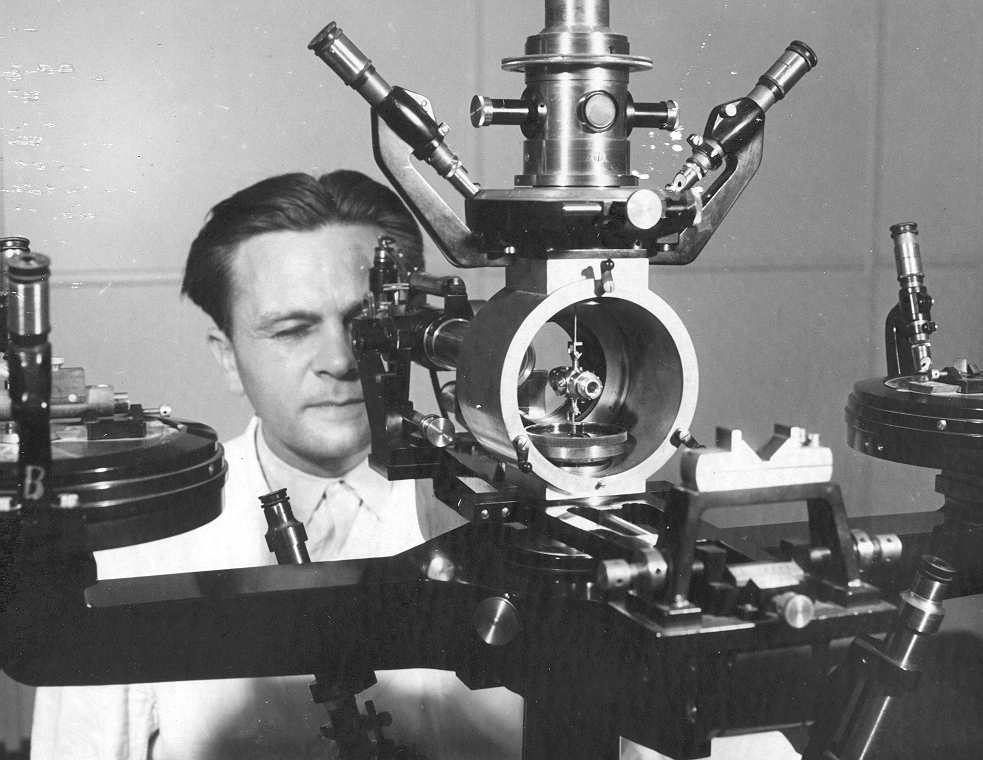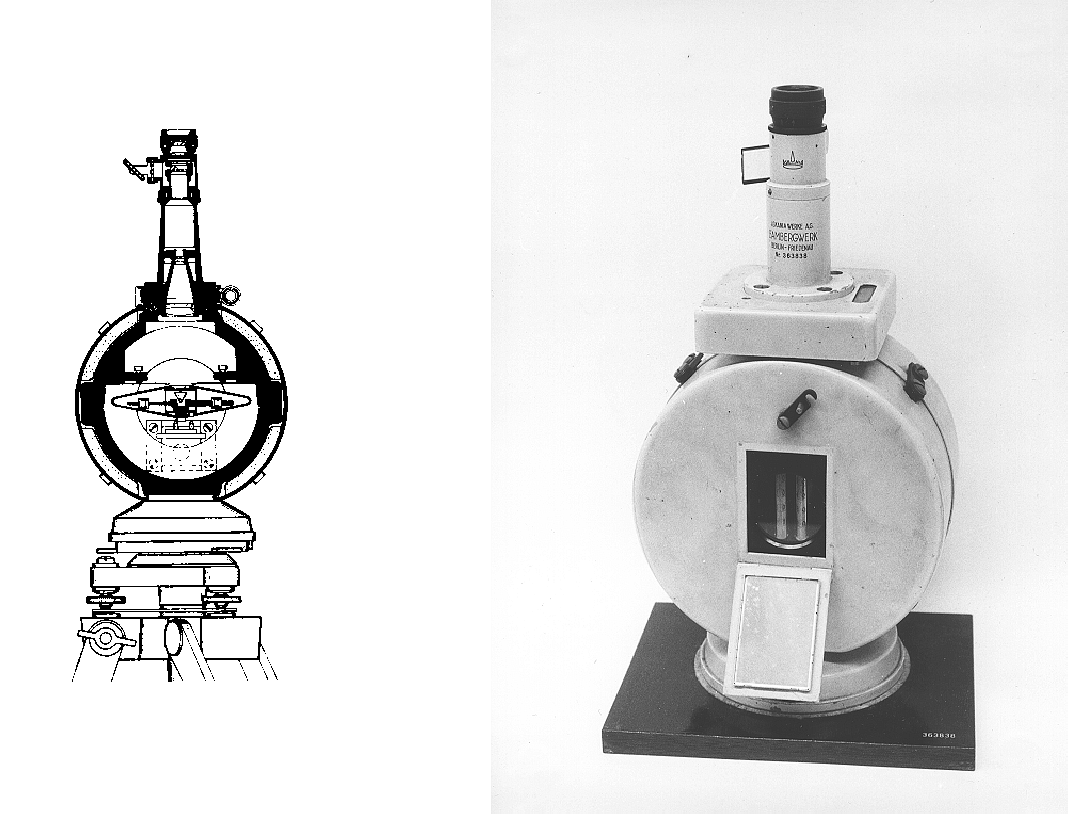
ADOLF SCHMIDT theodolite in use
ADOLF SCHMIDT's Time in Potsdam
Prior to coming to Potsdam, SCHMIDT had made his name with theoretical work. However, he soon demonstrated his abilities in experimental magnetism.
As director of the Magnetic Observatory ADOLF SCHMIDT
was able to pursue his various research interests on a large scale. He was
highly skilled in all fields of geomagnetic research, experimental methods,
statistics and mathematical methods. Some of his experimental results were
only possible due to his theoretical and mathematical research.
The
first deals with the modification of the deflection experiments, used to
measure the absolute magnetic horizontal intensity. These experiments were
hampered by difficulties arising from the inhomogeneity of the artificial
magnetic field. With some pioneering research ADOLF SCHMIDT
succeeded in solving these problems in a definitive manner. At first this
was a purely mathematical and theoretical solution. But he was not satisfied
with that and proceeded to put it into practice. The theodolite, named after
him, provided the experimental possibility of utilising the theoretical knowledge.

A further result of practical research was the construction
of the magnetic field balance. During the early years of the 20th century
magnetic measurements in the field became of more interest, making it relatively
easy to achieve knowledge about the distribution of the magnetic properties
of matter of the upper strata of the earth's crust. ADOLF SCHMIDT adapted to adjust the well-known LLOYD's
balance for use in the field. This was an especially difficult task, as this
balance was the most delicate instrument for magnetic variation-recordings,
particularly because the magnet is put on a knife-edge. It is characteristic
of his extraordinary technical and engineering abilities that ADOLF SCHMIDT
succeeded in designing an useful instrument. He developed the first balance
in 1907 in collaboration with the precision-mechanics workshop O. TOEPFER in Potsdam.

The statistical work of ADOLF SCHMIDT dealt initially with a problem already considered by MAX ESCHENHAGEN.
It was the question of summing up numerically the strength of the magnetic
variation during the day, caused by ionisation processes and the state of
the upper atmosphere. In order to define this so-called geomagnetic activity
ESCHENHAGEN had introduced five categories (1, 2, 3, 4, 5). ADOLF SCHMIDT
took up this idea, which he recognised to be the correct approach, and refined
it, at the same time reducing the categories to three (0, 1, 2). They were
accepted at the international congress in Innsbruck in 1905. These international
character figures are still used today. The idea of measures for the activity
led finally to the Potsdam geomagnetic activity indices K, introduced by
JULIUS BARTELS and internationally accepted in Washington in 1939.
ADOLF SCHMIDT investigated the geomagnetic effects of the tides on
the ionosphere. The so-called lunar diurnal variation in the geomagnetic
field indeed was known, but its treatment required numerical calculations
that were almost impossible for a single scientist with the computers then
available.
ADOLF SCHMIDT's mathematical investigations with regard to the transformation
of the spherical harmonics into different co-ordinate systems were especially
well known. He determined a general solution to this problem, and this formula
gave him the theoretical basis for the improvements in the deflection experiments
for the definition of the horizontal intensity, mentioned above.
One
of his important theoretical investigations was in the field of the so called
ring current. Indeed, the discovery, that such a ring current must be surrounding
the equator, was not his alone; for BIRKELAND and STOERMER
had already pointed out this phenomenon, but SCHMIDT, relying on the existing
material of several observatories, was probably the first to show the real
existence of the ring current, and to give data on its intensity.